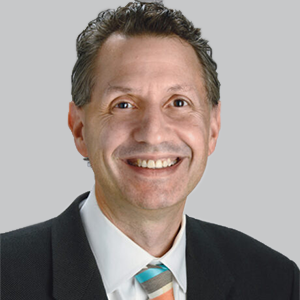Article
Ataluren Confirms Benefit in Nonsense Mutation DMD With Significant Results in Subgroup Analysis
Author(s):
In a subgroup of patients with 300 m to 400 m 6MWD scores in the phase 3 Study 041, ataluren (Translarna; PTC Therapeutics) showed particular improvements from baseline.
Jeffrey Statland, MD

Findings from the phase 3 Study 041 (NCT03179631) of ataluren (Translarna; PTC Therapeutics) confirm the therapy’s positive risk-benefit profile over a 72-week period in patients with Duchenne muscular dystrophy (DMD) and a nonsense mutation. The data align with the treatment’s established profile in prior clinical and real-world evidence studies.
Notably, compared with placebo, there were significant differences in mean 6-minute walk distance (6MWD) in both the intent-to-treat (ITT) population (ataluren, n = 183; placebo, n = 176) and the subgroup of boys with 300 m to 400 m 6MWD (ataluren, n = 86; placebo, n = 83).The change from baseline and rate of change favored ataluren in the ITT population (14.4 m; 0.20 m per week; P = .0248) and 300 m to 400 m 6MWD subgroup (24.2 m; 0.34 m per week; P = .0310). These findings, the authors noted, represented a 21% and 30% slowing of the decline rate in 6MWD in these groups, respectively.
In the primary analysis subgroup (ataluren, n = 92; placebo, n = 93) the change from baseline in 6MWD was –81.8 m and –90.1 m in the ataluren and placebo groups, respectively, for a difference of 8.3 m (P = .3626). This represented a 9% slowing of rate of decline.
The results were presented by Jeffrey Statland, MD, a professor of neurology at the University of Kansas Medical Center in Kansas City, Kansas, at the 2023 American Academy of Neurology (AAN) Annual Meeting, April 22-27, in Boston, Massachusetts. In Study 041, Statland and colleagues aimed to assess ataluren’s effect on ambulation specifically in this patient population. “Approximately 10% to 15% of patients with DMD have a nonsense mutation in the DMD gene, preventing the formulation of functional dystrophin protein. Ataluren promotes readthrough of the in-frame premature stop codon, enabling the production of full-length dystrophin,” they wrote.
In the ITT population, treatment with ataluren “resulted in significant benefits in time to 10% persistent worsening of 6MWD,” Statland and colleagues noted. This analysis included 95 patients (51.9%) in the ataluren group and 67 patients (38.1%) in the placebo group. The median time to 10% persistent worsening was 74.3 weeks (95% CI, 59.1-NA) for the ataluren group compared with 48.0 weeks (95% CI, 36.0-60.9) for the placebo group (log-rank P = .0078), for an HR of 0.7 (95% CI, 0.5-0.9).
READ MORE: Eculizumab Safe and Effective in Adolescents With Myasthenia Gravis, Small-Scale Study Suggests
“The number of ITT patients who lost ambulation receiving placebo was almost double that of those receiving ataluren,” the authors wrote. Overall, loss of ambulation occurred in 12 patients (6.6%) in the ITT ataluren group and 20 patients (11.4%) in the ITT placebo group, with similar findings of 5 patients (5.8%) and 10 patients (12.0%) in the 300 m to 400 m 6MWD subgroup, respectively. In the primary analysis subgroup, 5 patients (5.8%) on ataluren and 9 patients (9.7%) on placebo reported loss of ambulation.
Of note, the 300 m to 400 m 6MWD subgroup experienced significant benefits on North Star Ambulatory Assessment (NSAA) scores and timed function test (TFT) scores. Specifically, Statland et al reported that the NSAA liner score between-group difference was 3.3 points (ataluren, –10; placebo, –13.3; P = .0419), while total score between-group difference was 1.1 points (ataluren, –4.4; placebo, –5.5; P = .0837).
Of the 3 components of TFT score, 2 were significant between groups. The 10 m run/walk score between-group difference was –1.3 points (ataluren, 2.99; placebo, 4.28; P = .0429); the 4-stair climb between-group difference was –2.3 points (ataluren, 5.26; placebo, 7.55; P = .0050); and the 4-stair descent between-group difference was –1.0 points (ataluren, 4.62; placebo, 5.59; P = .2714).
At baseline, in the ITT population randomly assigned to ataluren, 6MWD was less than 300 m for 21 individuals (11.5%), between 300 m and 350 m for 40 individuals (21.9%), between 350 m and 399 m for 46 individuals (25.1%), and 400 m or great for 76 individuals (41.5%). In the placebo group, those respective breakdowns included similar numbers, at 21 (11.9%), 37 (21%), 46 (26.1%), and 72 individuals (40.9%). The baseline time to stand from supine was less than 5 seconds for 62 patients (33.9%) and 55 patients (31.3%) in the ataluren and placebo ITT groups, respectively. Both ataluren and placebo groups had 121 patients (ataluren, 66.1%; placebo, 68.8%) with a baseline time to stand from supine of 5 seconds or greater. The number of individuals with a sub-5 second time to stand from supine for the 300 m to 400 m subgroup was 16 (18.6%) for those given ataluren and 15 (18.1%) for those on placebo, with 70 and 68 (81.9% for both groups) patients having baseline times of 5 seconds or greater, respectively.
As for safety, “ataluren was well tolerated, with AE [adverse event] frequency shown to be similar between patients receiving ataluren vs placebo,” Statland et al wrote. There were no probable drug-related serious AEs, with AE frequency being 85.3% with ataluren and 84.7% with placebo. The most commonly occurring AEs with ataluren were vomiting, upper respiratory tract infection, and nasopharyngitis.
Click here for more coverage of AAN 2023.




